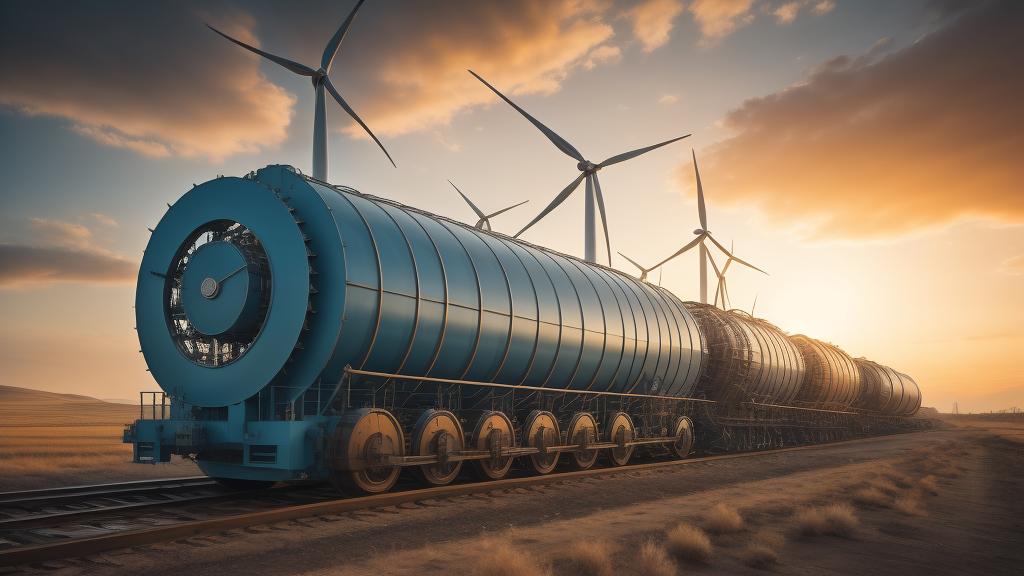In the competitive and rapidly evolving landscape of renewable energy, one intriguing development that is capturing the industry's attention is the emergence of Virtual Power Plants (VPPs). These systems, while not the latest buzzword, are gaining traction and redefining how energy is managed, distributed, and consumed.
VPPs combine various decentralized energy resources such as solar panels, wind turbines, and battery storage systems using sophisticated software to operate as a single power plant. By doing so, they optimize the supply and demand balance and offer a range of services, from energy storage and grid stabilization to powering homes with clean energy. But how did we get here, and where are VPPs heading?
The concept of VPPs is not new, but recent technological advancements and the ever-increasing awareness of environmental issues have propelled their development. With the ability to reduce reliance on fossil fuels and lower emissions, VPPs offer a promising solution to the global energy crisis. Key energy players are pouring into this space, recognizing its potential not only for sustainability but also for profitability.
One of the significant barriers VPPs are overcoming is the intermittency of renewable energy sources. By integrating varied energy resources scattered across large geographical areas, VPPs mitigate the unpredictability of solar and wind power. When the sun isn’t shining or the wind isn’t blowing, the VPP can redirect surplus energy stored in batteries back into the grid, ensuring a stable and reliable energy supply.
The flexibility of VPPs also extends to customer engagement. By linking up with thousands of residential energy systems, these plants allow consumers to actively participate in energy markets. Homeowners with solar panels can sell excess electricity back to the grid, contributing to and benefiting from a decentralized energy model. This democratizes energy assets and aligns individual contributions with broader sustainability goals.
Moreover, regulation and policy developments are crucial in shaping the landscape for VPPs. Governments worldwide are increasingly supportive of decentralization in energy production, spurred by a mix of climate goals and economic incentives. The favorable regulatory environment is encouraging utility providers to adopt VPP technologies, which, in turn, drives innovation and competition.
However, the journey to widespread VPP adoption is not without its challenges. Cybersecurity issues pose potential risks, as interconnected systems could be vulnerable to attacks. Managing a multitude of devices and coordinating the data flows require robust architecture and real-time monitoring, demanding significant investment in technology.
Moreover, utilities need to adapt their business models. Traditional utilities might see VPPs as disruptive forces, upending established central power systems. Yet, by embracing them, utilities can leverage VPP benefits, offering value-added services and enhancing grid reliability. It’s a situation akin to the rise of ridesharing apps: either adapt and thrive or resist and risk obsolescence.
Looking ahead, the future of VPPs looks promising. As technology improves, the costs of implementing these systems will decrease, and their efficiency will rise. Partnerships between technology companies, utilities, and innovative startups are proliferating, creating synergies that are driving unprecedented growth in the sector.
With global energy demands only set to grow, the role of VPPs will become more prominent. They present a scalable, flexible, and reliable solution to meet the needs of an increasingly electrified world. VPPs stand at the crossroads of technology and sustainability, pointing to a clean energy future that’s not just possible, but already unfolding.
The surge in VPP interest is more than just a trend—it’s a testament to the evolving nature of the energy market. As consumers, policymakers, and corporations continue to prioritize sustainability, the development of VPPs could be pivotal in the transition to a greener and more energy-efficient world.
The surprising potential of virtual power plants

